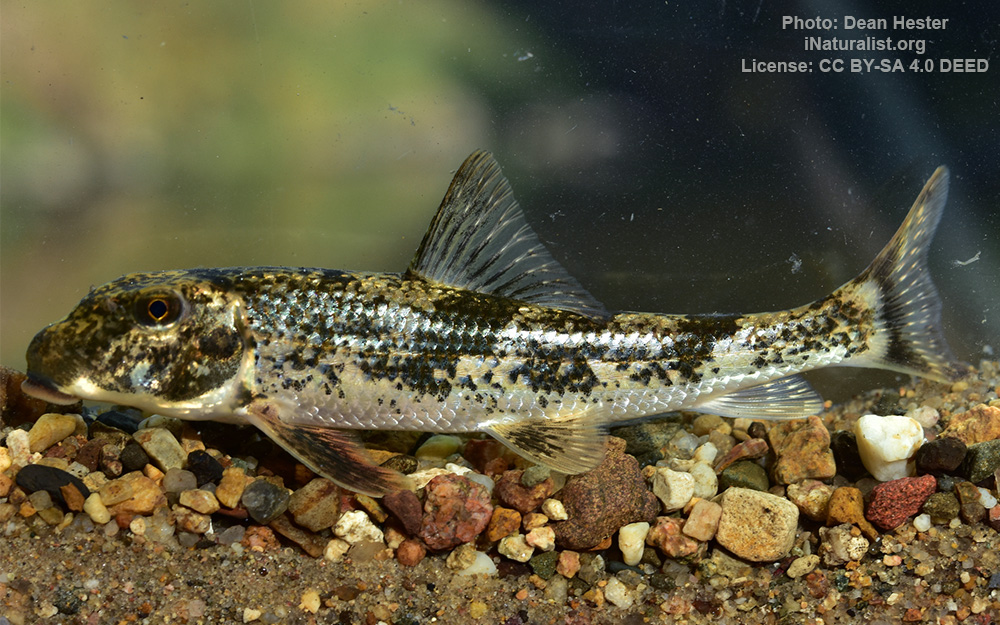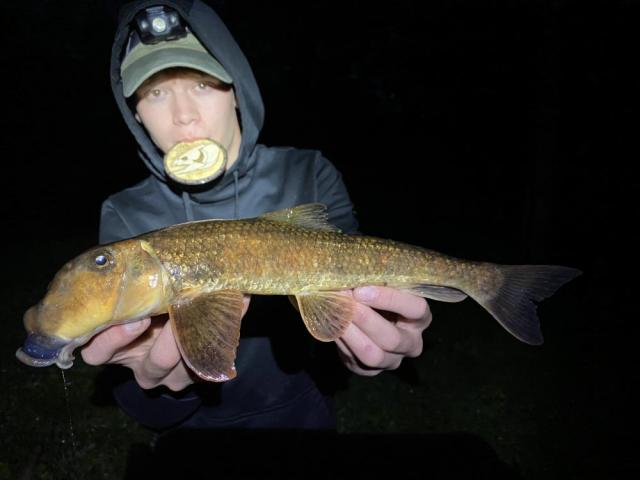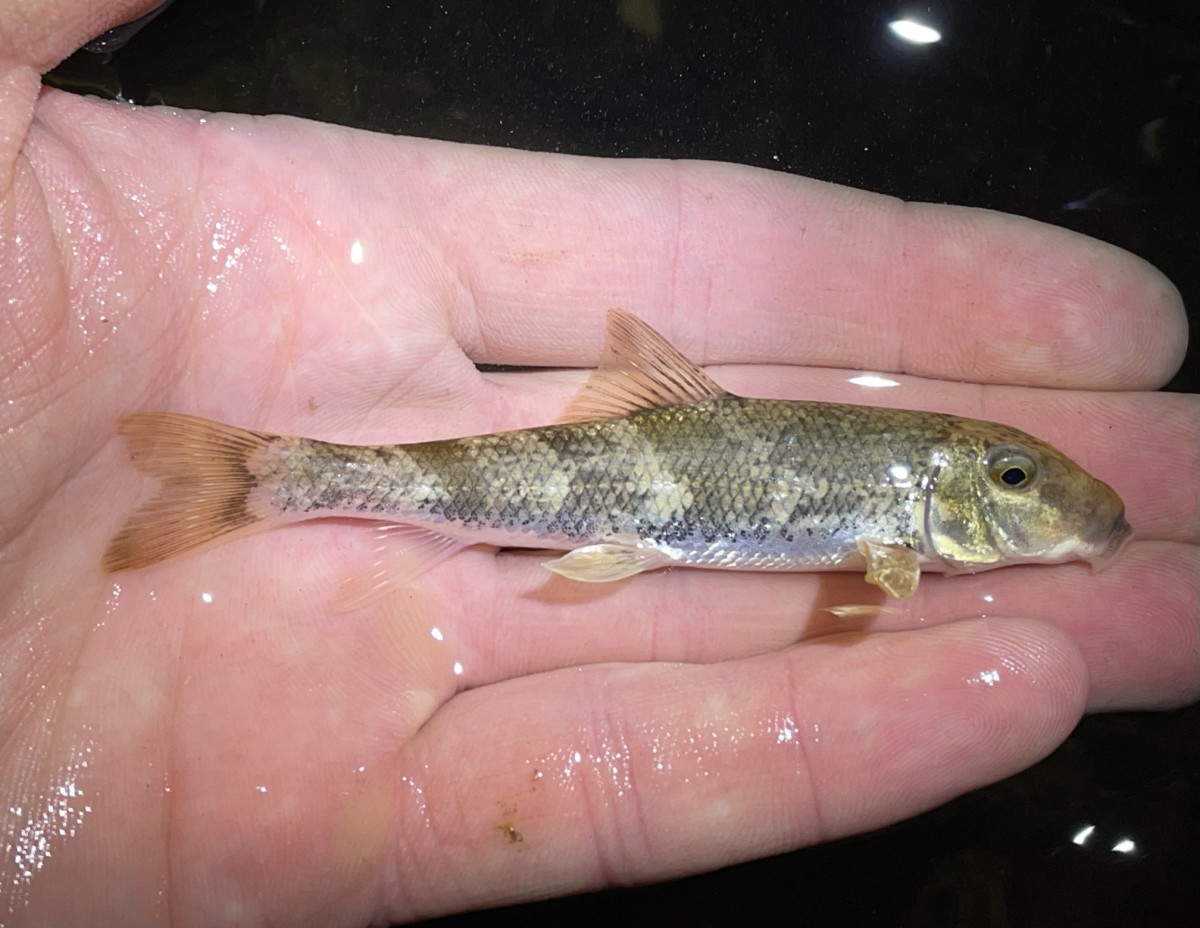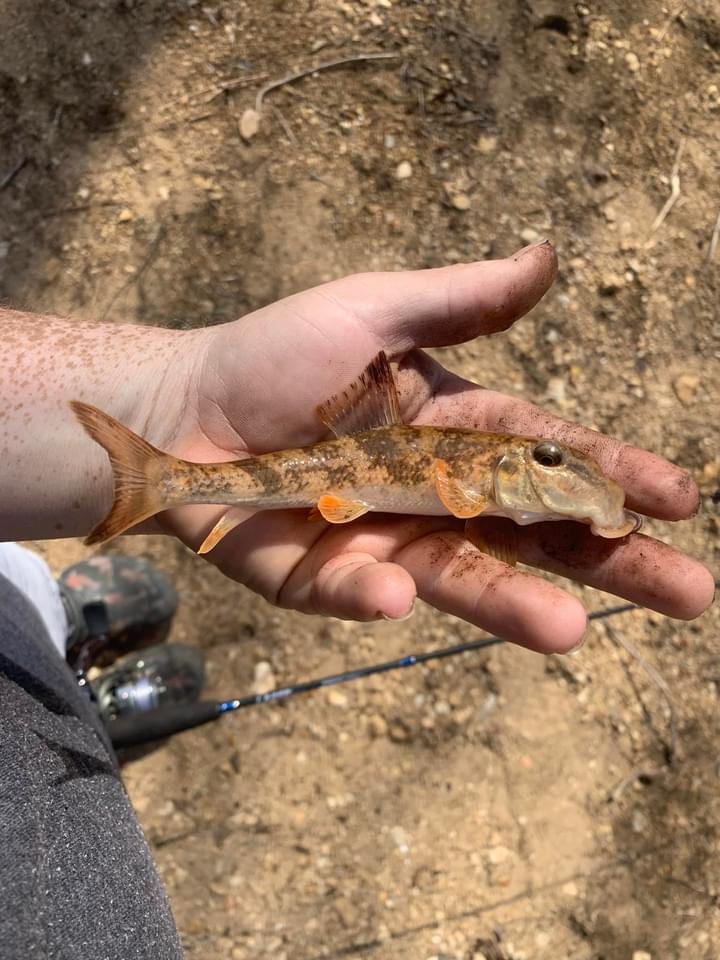Northern hogsucker
(Hypentelium nigricans)

Image source: Dean Hester | inaturalist.org
Classification
General data
The northern hogsucker (Hypentelium nigricans) is a freshwater ray-finned fish belonging to the family Catostomidae, the suckers. It is native to the United States and Canada where it is found in streams and rivers. It prefers clear, fast-flowing water, where it can forage on the riverbed for crustaceans, mollusks, aquatic insects, algae, and detritus. It turns over small pebbles and scrapes materials off rocks and sucks up the particles, and other species of fish sometimes station themselves downstream from its activities so as to garner disturbed food fragments. Breeding takes place on gravel bottoms in shallow riffles in late spring. This fish is susceptible to such man-made disturbances as channelization, sedimentation, pollution, and dam construction.
Distribution
The northern hogsucker is native to southern Canada and much of the eastern and southern United States. It lives in the rivers of the Mississippi River Basin, its range extending from Oklahoma and Alabama northward to Minnesota. It is present in the Great Lakes and rivers of the mid-Atlantic region. Its current range is similar to its historical distribution, except in western areas, where it has experienced some extirpations. Habitat disturbance due to agriculture practices in states such as South Dakota, Iowa, Missouri, Kansas, and Oklahoma have contributed to the extirpation events.
Males can reach sexual maturity in their second season, while females usually do not reach maturity until their third year. Specimens in smaller streams are smaller and take longer to mature.
H. nigricans may reach up to 33 cm by the end of its fifth growing season. Exceptionally large specimens of this species are usually female. The maximum life span is about eleven years.














